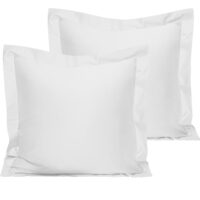Uncategorized
The Soulful Artisans Behind Bamboo and Rattan Craft
From simple materials like rattan, wild palm leaves, water hyacinth, sedge, and rush, skilled and meticulous hands have transformed them into beautiful handcrafted artworks. The traditional weaving craft has been and continues to provide jobs for many workers in Ninh Hoa Town.
At the Vinh Phuoc Handicraft Export Cooperative (Ninh Hiep Ward), we saw a wide range of woven products such as handbags, hats, baskets, chairs, shelves, trays, and laundry bins in various patterns and sizes. All of these handcrafted items are made from materials like rattan, wild palm leaves, water hyacinth, sedge, banana bark, and rush. Through the experienced hands of skilled artisans, these ordinary raw materials are transformed into refined, beautiful crafts. Nguyen Thi Thanh Thuy (born in 1984, residing in Ninh Da Ward), who has over 20 years of experience in traditional weaving, shared that each product typically goes through three main stages: weaving the base, the body, and finishing the rim. Depending on the type of product and material, artisans use various weaving techniques such as basic square weave, twill weave, seed weave, spiral weave, floral weave, and fishbone weave. To achieve consistent and visually appealing results, weavers must possess both skill and experience. Most products are made around a pre-shaped iron frame according to customer specifications. Some designs include the frame inside for structural support, while in others, the frame is removed after weaving. After all stages are completed, the products are trimmed, cleaned, and then coated with adhesive and gloss spray before being sun-dried for enhanced durability and appearance. To prevent fibers from breaking during the process, artisans spray them with water to soften the materials. For tougher materials like rattan, more physical strength is required to maintain uniform and beautiful weaving. When she first started, Mrs. Thuy struggled with uneven surfaces, dents, and lumpy finishes. To overcome these challenges, she committed herself to learning and improving her skills—refining her technique through continuous practice and careful adjustment during the weaving process.
Handicraft work requires patience, meticulousness, and dexterity, which is why it is mostly done by women. This also helps create job opportunities for local female workers, allowing them to earn extra income daily or during their free time and off-season periods. Currently, raw materials are sourced by the cooperative from various provinces and then distributed to artisans in communes and wards across Ninh Hoa Town and Van Ninh District for initial processing. As a housewife, Mrs. Le Thi Thuy Dung (born in 1972, residing in Ninh Trung Commune) takes advantage of her free time to weave products from home and earn additional income. She has been doing this work for the past five years. Whenever a new product is introduced, the cooperative sends someone to guide her and other women in the neighborhood through the process. She primarily produces items such as rush mats, cat houses, rabbit frames, grass screens, coasters, and baskets made from rush, rattan, water hyacinth, and banana fiber. Depending on the item, she is paid between 1,500 and 27,000 VND per piece. On average, she earns about 50,000 VND per day from this work.
The bottom and body parts of the products are processed by women working from home, while the remaining steps, including finishing, are completed at the cooperative. Each person has a specific task, and everyone focuses intently on doing their part to the best of their ability. While wrapping the rim of a basket made from rattan, Mrs. Nguyen Thi Tuyet Nhung (born in 1988, residing in Ninh Hiep Ward) shared that she has only been working here for two months. Before starting, she received training and was able to grasp the work in about three to four days, though it took a full month to get used to it. At first, her weaving was uneven and had to be redone several times, which was discouraging. However, with continued practice, her hands became more skilled, the products looked better, and her craftsmanship improved—making her grow to love the job and hope to pursue it long-term. In the beginning, she could only wrap the rims of about 4 to 5 baskets a day, but now she can complete 10 daily, earning 14,000 VND per basket. Nearby, Mrs. Nguyen Thi Hong (residing in Ninh Da Ward) is attaching handles to oval baskets made from water hyacinth. She has been doing this job for four years, earning around 140,000 VND per day. For her, this craft not only fulfills her passion for traditional weaving but also provides a stable source of income.
With their artistic value, diverse designs, and wide range of uses, handcrafted products made by the skilled hands of artisans have been exported to many countries such as the United Kingdom, France, and Japan. Each product reflects the collective effort of many individuals, delivering items to consumers that are not only beautiful but also environmentally friendly.
Mr. Ngo Van Nhan – Chairman of the Board and Director of Vinh Phuoc Handicraft Export Cooperative – shared that the cooperative currently provides jobs for around 500 female workers across various communes and wards in Ninh Hoa Town and in Xuan Son Commune, Van Gia Town (Van Ninh District). Of these, 90 women work directly at the cooperative, earning an income of 4.5 to 5 million VND per month. This work allows women to do piecework from home, making use of their free time or off-season periods to earn extra income. In the near future, the cooperative plans to continue training and guiding workers to produce new items based on customer demand, helping local women gain more employment opportunities, increase their earnings, and improve their quality of life.
 Blue Sky 2021 17' x 11' Desk Pad, Lindley Multi
Blue Sky 2021 17' x 11' Desk Pad, Lindley Multi  Solder Seal Power Steering Fluid 12Oz
Solder Seal Power Steering Fluid 12Oz  NTBAY 2 Pack 1800 Thread Count Cotton Euro Pillow Shams, Super Soft and Breathable European Throw Pillow Covers, Square Pillow Cases, 26'x26', White
NTBAY 2 Pack 1800 Thread Count Cotton Euro Pillow Shams, Super Soft and Breathable European Throw Pillow Covers, Square Pillow Cases, 26'x26', White